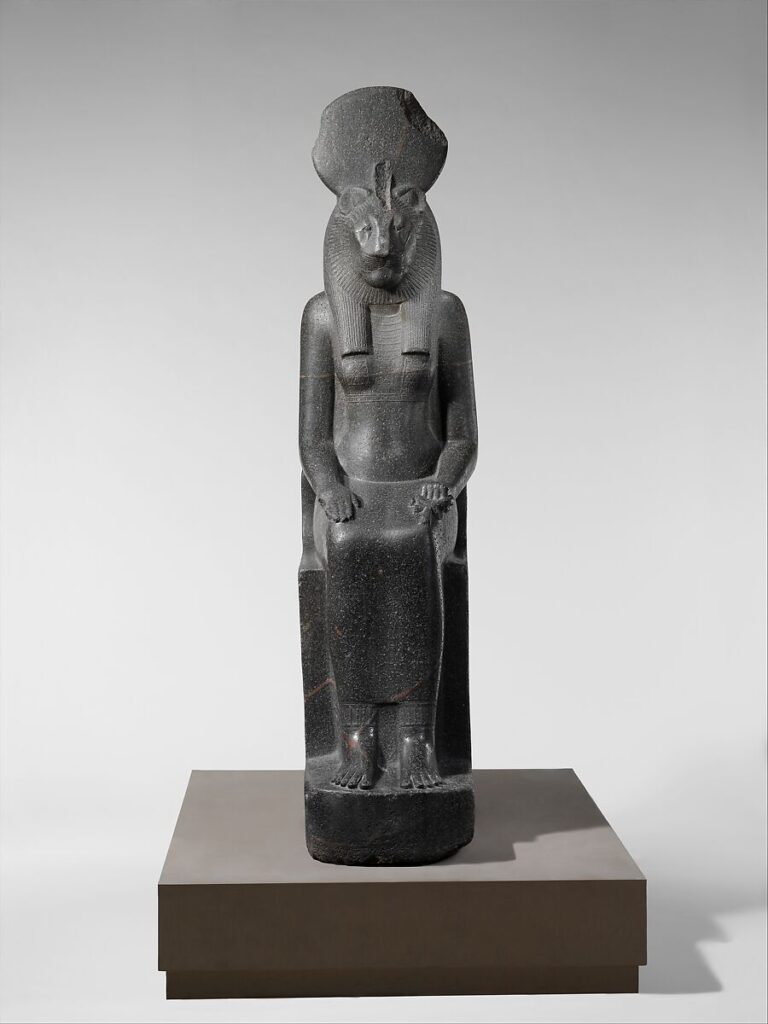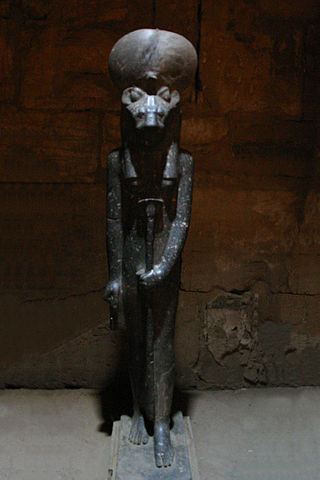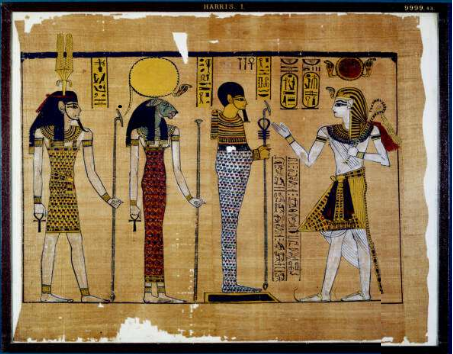What life lessons can we learn from Sekhmet? What can she teach us about coping with righteous anger in ways that heal and nurture creativity?
One of the things I love most about mythology is discovering an inner message within a tale that speaks to us in this age; finding tales from the past that offer insight in modern times.
The story of the blood thirsty lioness Sekhmet is a tale I never expected to find meaning in, but a recent deep dive has had me thinking about the profound lessons that this goddess can teach us. Sekhmet is a complex Egyptian deity who challenges us to look at healthy ways to express rage in our life and turns it into constructive healing.
Sekhmet’s Origins

Known as the Eye of Ra, Sekhmet’s origins are a bit murky (which isn’t surprising in mythology). She’s sometimes born from Ra turning his gaze from Nut (sky) to Geb (earth). Sometimes Ra creates her out of Hathor. Sometimes she is taken from Ra’s eye.
In every story, she the lion headed goddess of vengeance; the “Powerful One” who “loves Ma’at” and seeks to restore law or balance on Ra’s behalf when humankind (and sometimes the gods) plot against him in his old age.
Sekhmet’s Story
When Sekhmet turns her intense gaze to the earth, she wreaks havoc. She becomes so caught up in her frenzied bloodlust that Ra and the other gods look for ways to turn her away from her blood thirsty vengeance. Eventually they devise a plan to trick her. They dye beer red with pomegranates or ochre (depending on the story). Sekhmet sees this lake of dyed beer and thinking that it is blood, she comes down to drink it. She eventually becomes so drunk that she passes out for three days.
When she awakes, depending on the story variation, the first thing she sees is Ptah (a creator god and patron of crafts people) and she falls in love. Together they have Nefertem (healing and first daylight) and Maahes (a god of war). Some authors write that the union between vengeance and craftsmanship; creativity and destructiveness is actually the restoration of Ma’at.
Note that there is more to this story involving Ra. In some variations, Ra withdraws from the realms of humankind to the skies after this event, which feels like a mythic theme that gets echoed across multiple mythologies. I think this is key because it charts the shift from the Divine living amongst us to a movement towards the celestial.
Sekhmet’s Legacy

Sekhmet is a powerful goddess. She is the self righteous wrath of the divine when justice (Ma’at) needs to be served to keep balance. But her vengeance comes at a cost. She can become consumed by it and lose sight of her mission.
This leads to her needing to be appeased regularly. According to the myths, humans offered her food and drink, music and dance often in order to keep her content. (One could also read that as distracted, placated, or even inebriated). In fact, the fest of Tekh (drunkenness) is not just a festival for Hathor, but also one for Sekhmet. People would gather at the temples, drink on the steps, and presumably pass out from drunkenness only to be awakened by ritual drumming (according to some sources), thus reenacting Sekhmet’s story.
Another aside: sometimes this beer was also fortified with narcotics – specifically mandrake – in order to ensure that Sekhmet/Hathor would fall into a merry sleepy bliss sooner than later!
Lessons from Sekhmet
Self-righteous anger has a purpose because it can restore balance. In fact, Sekhmet is not only a goddess of destruction, but also of healing. If she favours you, she can be a great ally. Demanding, but powerful. She brings the plagues but can heal them too.
We are taught to fear anger, especially women. And Sekhmet’s tale is just another example of the fear of that anger and destruction getting out of control. What do we do to control it? We drug it, drink it away, distract ourselves and hide from it.

But what if we looked at it differently? What if we saw the value in the destruction (bear with me here). The destruction sucks. There’s no question about this. Even the gods feared Sekhmet’s vengeance when it got out of control. But balance (union with Ptah the craftsman) and healing (Nefertem) were the eventual after effects of her rampage. From her frenzied rage joined with craftmanship creates healing. If we remember to see beyond the literal meaning to the allegories in the tale, that’s kind of an amazing process.
In other words, if we safely indulge in our righteous fury (Tekh) we can find sacred, constructively outlets that can lead to healing.
Sekhmet thus becomes a metaphor for finding healthy outlets for our drive, passion, energy, and rage so that we can maintain balance in our lives. In finding that balance, we can delight in the Hathor-ian joys of life.
Sources
Some of the places I drew information from for this post. Note that I have not adhered to any standard citation criteria, opting instead to provide a simple format for blogging purposes.
- Egyptian Myths. Ed. Jake Jackson. Flame Tree Publishing. 2018
- Wikipedia. Search terms: Sekhmet, Eye of Ra, Hathor, Tekh, Ra, Ptah, Nefertem, Maahes.
- Egyptian Gods. Stephan Weaver. 2017
- Quareia. Josephine McCarthy
Enjoy this post? Try Eos: Unpacking the Mythic – an exploration of a dawn goddess.

One thought on “Life lessons from Sekhmet”